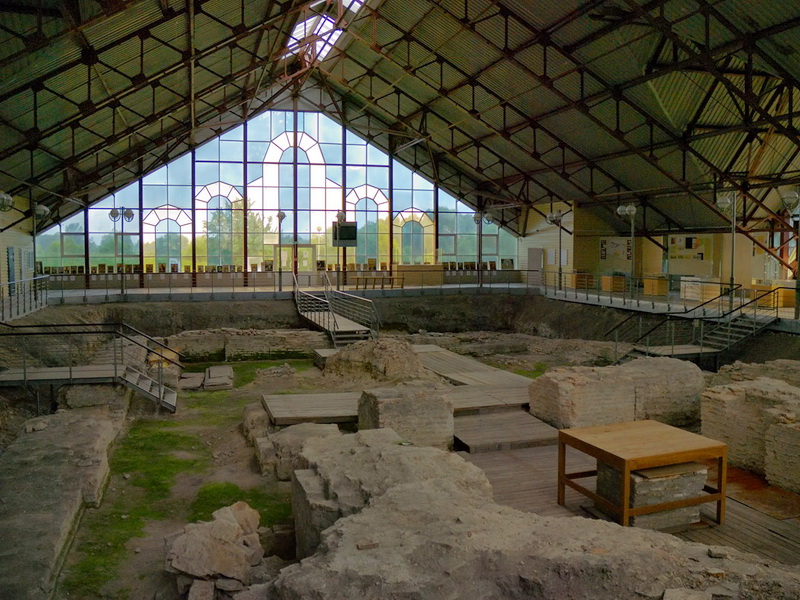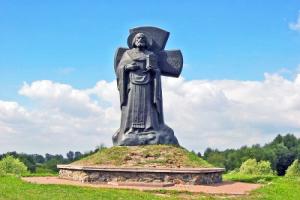The settlement represents the remains of a fortified medieval city, which included the detinets (princely castle) and the outer town (posad). Today, it is an archaeological site where visitors can see traces of ancient buildings, defensive structures, and religious sites. The settlement is included in the State List of Historical and Cultural Values of the Republic of Belarus and annually attracts researchers and tourists interested in the history of Ancient Rus.
History of its Creation
The first mention of Turov appears in the “Tale of Bygone Years” under the year 980, when the city was the center of the Turov Principality. Its founder, Prince Tur, gave the city its name and became the ancestor of the dynasty. Turov played an important role in the political life of the Eastern Slavs, competing with Polotsk and Kiev.
Archaeological studies have shown that as early as the 10th century, Turov was a large city with a developed craft industry. It had powerful wooden and earthen fortifications, and later – a stone castle. In the 12th–13th centuries, it was one of the largest princely residences in the region.
The main defensive structure – the Turov Tower – was built in the 13th century and belonged to the Volhynian tower type (similar to the Kamenets Tower). It had a circular shape (18–19 meters in diameter) and several combat levels. In 1830, the tower was dismantled, but its foundation and some elements were discovered during excavations.
The detinets was separated from the outer town by a moat filled with water until 1925. The outer town itself occupied about 1.5 hectares and rose 5–6 meters above the surrounding area. Here, residential and economic buildings, craft workshops, and trade rows were located.
Excavations have uncovered numerous artifacts that testify to the development of crafts:
- fragments of ceramic vessels,
- tools and weapons,
- jewelry items,
- bone, wooden, and metal products.
Of particular interest are the discovered Turov crosses, fragments of amphorae indicating the city's trade links with the Northern Black Sea region, as well as the remains of a pagan shrine from the 10th century and a Christian temple from the 12th century.
Current State
Today, the ancient settlement of Turov is an archaeological site open to visitors. The remains of the princely castle, medieval buildings, religious structures, and defensive fortifications have been preserved here.
On the site, visitors can see:
- the ruins of a 12th-century temple (possibly destroyed by an earthquake in the 13th century),
- slate sarcophagi where noble residents of ancient Turov were buried,
- a stone bas-relief depicting an archer, considered one of the rarest examples of medieval sculpture,
- the excavation site of the Turov Tower, which gives an idea of the scale of the medieval fortress,
- defensive walls and moats marking the boundaries of the ancient city.
Some of the artifacts are exhibited in the Turov Local History Museum, as well as in the National Historical Museum of Belarus.
Excursions with a Tour of the Settlement
The ancient settlement of Turov is an important stop on the route of excursions around Belarus. This site can be visited as part of a tour from Minsk, which offers a deep dive into the history of one of the oldest cities in the country.
The tour program may include:
- a visit to the settlement, where one can see the ruins of temples, princely buildings, and defensive fortifications,
- an introduction to the Turov crosses – unique artifacts of Orthodox culture,
- a guided tour of the Turov Local History Museum, where ancient artifacts discovered during excavations are displayed,
- a walk along the scenic Pripyat River embankment, offering breathtaking views of the ancient lands of the Turov Principality.
During the tour, visitors will learn about the history of the city, its significance in medieval Rus, the architectural features of ancient buildings, and the culture of its inhabitants. Turov is not only a historical heritage site but also a picturesque part of Polesie, where one can enjoy the natural beauty and medieval atmosphere.
Book a tour with a visit to the settlement on our website. This is a great opportunity to explore one of the most significant historical places in Belarus and experience the centuries-old heritage of the Turov Principality.


